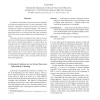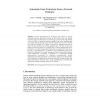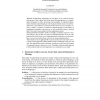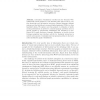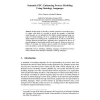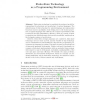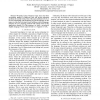RE
2007
Springer
14 years 6 months ago
2007
Springer
In industrial requirements documents natural language is the main presentation means. In such documents, system behavior is specified in the form of scenarios, written as a seque...
NLDB
2007
Springer
14 years 6 months ago
2007
Springer
Various methodologies for structuring the process of domain modeling have been proposed, but there are few software tools that provide automatic support for the process of construc...
NLDB
2007
Springer
14 years 6 months ago
2007
Springer
The design of an Extract – Transform – Load (ETL) workflow for the population of a Data Warehouse is a complex and challenging procedure. In previous work, we have presented an...
NLDB
2007
Springer
14 years 6 months ago
2007
Springer
Abstract. Requirements engineering, the first phase of any software development project, is the Achilles’ heel of the whole development process, as requirements documents are of...
KI
2007
Springer
14 years 6 months ago
2007
Springer
Information visualisation benefits from the Semantic Web: multimodal mobile interfaces to the Semantic Web offer access to complex knowledge and information structures. Natural l...
ESWS
2007
Springer
14 years 6 months ago
2007
Springer
Abstract. In this article we describe a semantic extension of event-driven process chains, with which it is possible to specify the semantics of individual model elements as it is ...
COSIT
2007
Springer
14 years 6 months ago
2007
Springer
Abstract. This paper analyses the semantics of natural language expressions that are associated with the intuitive notion of ‘place’. We note that the nature of such terms is h...
CLEF
2007
Springer
14 years 6 months ago
2007
Springer
Our algorithm, ParaMor, fared well in Morpho Challenge 2007 (Kurimo et al., 2007), a peer operated competition pitting against one another algorithms designed to discover the morp...
CICLING
2007
Springer
14 years 6 months ago
2007
Springer
Finite-state technology is considered the preferred model for representing the phonology and morphology of natural languages. The attractiveness of this technology for natural lang...
IROS
2007
IEEE
14 years 6 months ago
2007
IEEE
— Recently, Linear Temporal Logic (LTL) has been successfully applied to high-level task and motion planning problems for mobile robots. One of the main attributes of LTL is its ...
